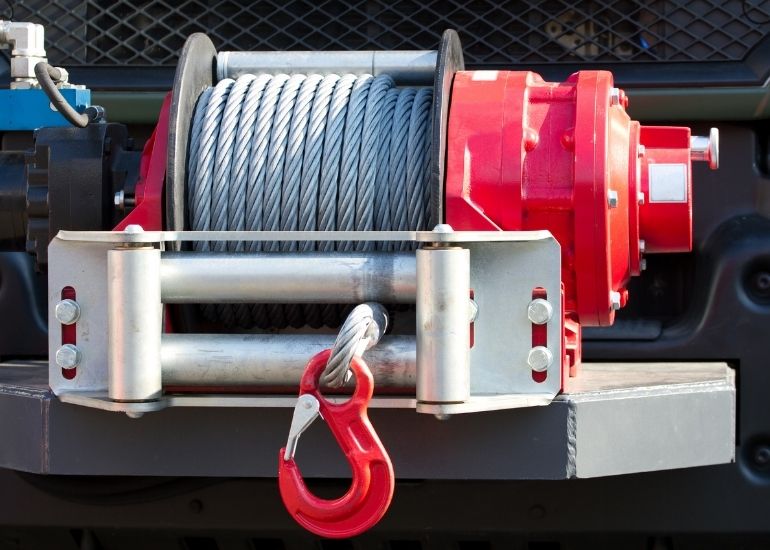It’s more than just having a fancy piece of hardware on the front of your rig when you own a winch; it’s a big responsibility, so don’t take it lightly. If you’re on the trail with a small group and you’re the only one with a winch, you’re the recovery rig by default. Even better, you’re alone on the path and have gotten yourself into a perilous scenario that necessitates self-rescue—that’s when your winch (literally) becomes your lifeline. Here are the top things you need to know to use a winch!
How To Choose a Winch
Are you having trouble deciding which winch is best for you? Calculating the line pull required for the application is the best technique to pick. To do so, multiply the Gross Vehicle Weight (GVW) of your vehicle by 1.5 to get an estimate of how big your winch should be. The first layer of rope around the drum is usually the maximum load the winch can handle. Each extra layer reduces the rated line pull by around 10%. So, if a winch is rated at 9,500 pounds, the second layer will draw 8,550 pounds, the third 7,700 pounds, and so on.
What Should You Winch To?
You’ll need to winch to anything sturdy and heavy enough to free yourself from the muck. It makes sense to winch to another vehicle if you’re on the trail with another vehicle (You don’t wheel alone, do you?) That is, if the rig is the same size (or greater) as yours, is in front of you, can act as an anchor, and has good recovery points. If that’s not possible, use your tree saver strap to winch to a tree or a huge boulder. Make sure the rock or tree can sustain your vehicle’s weight and is firmly planted so you won’t be able to pull it toward you; if you don’t, you could wind up with a lot more issues than you started with.
Recovering Another Vehicle
We recommend using the winch from outside the 4×4 if your vehicle is retrieving another rig so you can assess the situation. If you have a third person with you, have them apply the brakes on your vehicle. They will be immediately in the direction of the winch pull, but they are not required to witness what is going on. If the winch cable breaks, raising your hood will shield them from injury. Furthermore, winches consume a large quantity of current and produce a lot of heat. As a result, we advocate winching in short bursts if possible.
We hope you have enjoyed our article on the top things you need to know to use a winch! Keep in mind that a winch is never your only option for recovery. As such, taking the time to understand the different methods of vehicle recovery is invaluable to your off-roading endeavors.

